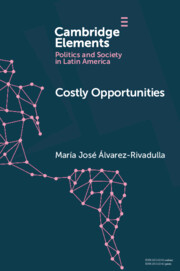This essay reviews the following works:
Community of Peace: Performing Geographies of Ecological Dignity in Colombia. By Christopher Courtheyn. Pittsburgh, PA: Pittsburgh University Press, 2022. Pp. xx + 284. $55.00 hardcover. ISBN: 9780822947141.
Latin American Extractivism: Dependency, Resource Nationalism, and Resistance in Broad Perspective. Edited by Steve Ellner. Lanham, MD: Rowman & Littlefield, 2021. Pp. ix + 292. $41.00 paperback, $94.00 hardcover, $39.00 eBook. ISBN: 9781538141564.
Things with a History: Transcultural Materialism and the Literatures of Extraction in Contemporary Latin America. By Héctor Hoyos. New York: Columbia University Press, 2019. Pp. xiii + 302. $30.00 paperback, $90.00 hardcover. ISBN: 9780231193054.
Planetary Longings. By Mary Louise Pratt. Durham, NC: Duke University Press, 2022. Pp. viii + 340. $28.95 paperback, $104.95 cloth. ISBN: 9781478018292.
Life without Lead: Contamination, Crisis, and Hope in Uruguay. By Daniel Renfrew. Oakland: University of California Press, 2019. Pp. xv + 308. $29.95 paperback, $85.00 hardcover, $29.95 e-book. ISBN: 9780520295476.
Mourning El Dorado: Literature and Extractivism in the Contemporary American Tropics. By Charlotte Rogers. Charlottesville: University of Virginia Press, 2019. Pp. xv + 340. $39.50 paperback, $79.50 cloth. ISBN 9780813942667.
The Small Matter of Suing Chevron. By Suzana Sawyer. Durham, NC: Duke University Press, 2022. Pp. xv + 400. $29.95 paperback, $109.95 cloth. ISBN: 9781478017950.
Breaking Ground: From Extraction Booms to Mining Bans in Latin America. By Rose J. Spalding. New York: Oxford University Press, 2023. Pp. xvii + 308. $83.00 hardcover. ISBN: 9780197643150.
The Three Deaths of Cerro San Pedro: Four Centuries of Extractivism in a Small Mexican Mining Town. By Daviken Studnicki-Gizbert. Chapel Hill: University of North Carolina Press, 2022. Pp. xiii + 307. $34.95 paperback. ISBN: 9781469671109.
